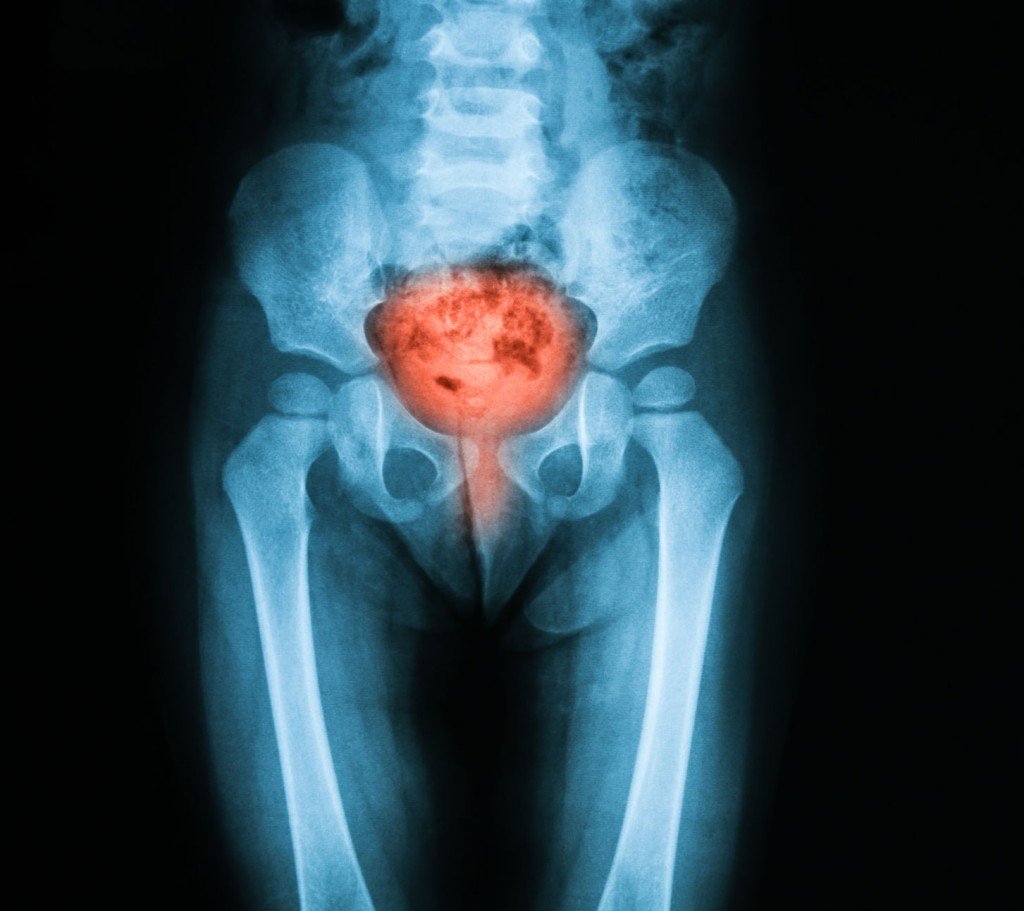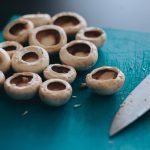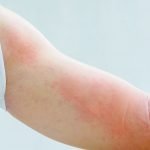Nita Bishop, ND and Rowan Hamilton, MNIMH
Have antibiotics been designed around the wrong premise?
More than 100 years ago, Robert Koch made an important breakthrough in the history of microbiology by developing methods to create a solid nutrient media to proliferate bacterial species. As constructive as this strategy may have been, pure cultures only exist in the Koch test tube application and are virtually absent in nature. Could Koch have sent the science of microbiology completely down the wrong path? Studying the role of biofilms in urinary tract infections (UTIs) may shed some light on why we now face the dire consequences of antibiotic resistance.
Current View of UTIs
UTIs are one of the most common reasons adult women visit a doctor’s office, and they remain a major medical problem in terms of the number of women afflicted each year. At least 21% of women are known to suffer significant bladder symptoms annually, including urgency and frequency of urination, as well as a burning sensation. As much as 6% of the adult female population experiences three or more episodes of dysuria during a given year (Alraek et al., 2002). Women may become frustrated by the cycle of repeated antimicrobial agents due to the resistance of bacteria to drugs. Antimicrobial agents and spermicides can disrupt the vaginal flora, making the patient more susceptible to bladder and vaginal infections. Significant health risks can accompany recurrent UTIs, since they may progress to more serious kidney infections. There are 700,000 episodes of acute pyelonephritis annually in the U.S. (NIH, 2002). For recurrent infections, antibiotic treatment is ineffective. In contrast to plant medicines, which enhance the immune system and have multiple actions, antibiotics do nothing for immune enhancement. Trimethoprim/sulfamethoxazole (SXT or co-trimoxazole), for instance, does not inhibit bacterial adhesion directly and actually may increase levels of more virulent uropathogens after cessation of treatment (Yarnell and Abascal, 2008). This vicious cycle involving antibiotic treatment of UTIs should reinforce the rationale for NDs to develop and utilize more novel therapeutic treatment approaches. Antimicrobial agents apparently are initially effective at eradicating the infection, but with a high incidence of recurrence (Wong et al., 1984).
Bacterial Lectins
More than 90% of UTIs are associated with E. coli bacteria, Staph saprophyticus and STD organisms. Bacteria produce lectins, carbohydrate-binding proteins, which enable them to adhere to specific tissues. E. coli is able to adhere to urinary mucosal cells via these finger-like lectins, which extend from bacterial cell walls. Lectins, also sometimes called adhesins, bind to oligosaccharide-based glycoprotein extensions on urinary epithelium. This is the adhesion that mannose may overcome (Stansbury, n.d.).
Also, bacteria can reproduce every 20 minutes; 20,000 times as fast as humans. For this reason, they generate more mutations. If a colony of bacteria is treated with an antibiotic that fails to kill just a few of the mutants, those surviving mutants will multiply and pass on their resistance to new colonies of that bacterium.
Drug-resistant genes occur in plasmids, circular bits of DNA that are not attached to bacterial chromosomes. Because plasmids “float,” they can be passed more readily from one bacterium to another. In this manner, bacteria can exchange their resistance to drugs. Even harmless bacteria can pass on their drug resistance to dangerous microbes (Hatt and Rather, 2008).
There are three types of UTIs as defined by location: Cystitis, which is the most common infection, urethritis and pyelonephritis. Patients are warned that if they have fever or pain specifically in their lower back, or cannot urinate, they should immediately seek advice from a physician. Certain symptoms such as frequent urination, discomfort with urination and an abnormal urinary analysis (UA) demonstrating an increased bacterial count or blood in the urine, usually makes the diagnosis hard to miss. From a preventive medicine perspective, certain predisposing factors may create an environment for an infecting microorganism to take up residence in the urinary tract and elicit a low-grade inflammatory response by the body. These predisposing factors include: lack of proper hygiene, constipation, diabetes or high sugar intake, food allergies, stress, candida overgrowth, diaphragm use/misuse, new or multiple sexual partners or increased/vigorous sexual activity, neglecting to urinate before and after coition, obstructions (stones, tumors) and chemical sensitivities. Also, children with vesicoureteral reflux and pregnant women are at increased risk of infection. In recurrent UTIs, an underlying factor for women is a lack of local defense (immune status), leading to an increased number of abnormal organisms in the vagina, which may then ascend through the urethra into the bladder (Stansbury, 2006).
Untreated Dimensions of UTIs
If UTIs are one of the most common reasons women visit a doctor’s office, then what more can we do for them? Perhaps we can find answers by reviewing the naturopathic “dead sea scrolls” of Dr. Bastyr: From his notes, which he terms Genito-Urinary Agents, one can find reference to five herbs used to treat UTIs:
- Arctostaphylos uva-ursi
- Chimaphila umbellata
- Eryngium aquaticum
- Triticum repens
- Peumus boldo.
Arctostaphylos and Hydrastis have a common theme: alkalinizing the urine, which creates an environment where the antimicrobials will work better (Kinney and Blount, 1979).
Arctostaphylos has hydroquinone glycosides (specifically arbutin), polyphenols and quercetin. Arbutin from Arctostaphylos is attributed with anti-adhesive properties, but the whole plant is more effective than isolated arbutin. In general, the plant flavonoids inhibit release of anti-inflammatory compounds, and specifically the proanthocyanidin (PAC) flavonoids, which have anti-adhesion qualities. Current studies show that the alpha form of PACs is the anti-adhesion agent that prevents E. coli from adhering to the urinary tract wall (Johnson-White et al., 2006; Di Martino et al., 2006). Triticum repens contains high levels of the polysaccharide mannitol; NDs already use isolated mannose to treat UTIs where it decreases bacterial adhesion. It is indicated for cystitis, urethritis and nephritis. Peumus boldo is a South American herb primarily known to enhance liver function; Dr. Bastyr also knew its application in cystitis.
More Botanicals
Many more botanicals are effective in treating bladder infections, specifically when taken in teas or tinctures for better delivery to the urinary tract. Volatile oils are usually a hallmark of herbs that treat infection in the kidneys. Jill Stansbury, ND, chair of botanical medicine at NCNM and columnist for NDNR, recommends that if the problem is infective in nature, always include herbs such as Echinacea, Calendula, Barosma, Commiphora, Usnea, Yarrow, Baptisia, Allium or Gentiana. If there is pain due to inflammation of the urinary passages, use demulcents such as Althea, Comfrey, fresh Zea mays, Abelmoschus esculentus or Ulmus rubra preparations. Where there is pain (due to spasm or colic of urinary structures), use antispasmodics such as Viburnum, Dioscorea, Valerian, Kava or Passiflora. Chronic problems should be treated with tonic herbs such as Serenoa repens, Chimaphila or Solidago.
Anti-Adherence Research on Vaccinium macrocarpon
In many cases where long-term antibiotic therapy has failed, Vaccinium macrocarpon is a safe, inexpensive and excellent treatment choice. The fruit is one of the best studied anti-adhesion herbs. In Europe, there is longstanding research on Vaccinium macrocarpon. In 1984, Dr. Sobota demonstrated that it prevents E. coli from adhering to the epithelial cells of the bladder wall (Di Martino et al., 2006; Hooton et al., 1991; Smith et al., 1997; Sobota, 1984). The Weizmann Institute in Israel confirmed Dr. Sobota’s findings, specifically demonstrating that excreted hippuric acid inhibits E. coli from adhering to the lining of the bladder (Zafriri et al., 1989). The PACs have also been shown to block the adhesion of E. coli to human urothelium in vitro and in clinical trials (Johnson-White et al., 2006; Di Martino et al., 2006; Sobota, 1984; Howell et al., 1998). Related work indicates that other members of the Vaccinium family (blueberry, huckleberry, bilberry) possess this anti-adherence activity. To be most effective, cranberry juice must be as fresh as possible, preferably concentrated and unsweetened.
Probiotics
Several factors disrupt the normal flora and promote the development of a uropathogen-predominant vaginal flora, as well as a propensity for recurrent UTIs. These include factors such as spermicides for contraception, antimicrobials and a postmenopausal state of estrogen deficiency (Hooton et al., 1991; Smith et al., 1996; Raz and Stamm, 1993). The support and introduction of healthful bacteria into the intestinal, vaginal and urethral flora to replace or augment bacterial populations is gradually achieving scientific acceptance. Live microorganisms, when administered in adequate amounts, confer a health benefit on the host. Guidelines, prepared by the United Nations and World Health Organization, are now available to guide physicians and consumers regarding strains of bacteria that have documented benefits. The most studied strains are Lactobacillis rhamnosus and Lactobacillus fermentum, which have been shown to reduce the urogenital pathogen load and the risk of urinary tract and vaginal infections (Bruce and Reid, 2003).
TCM
In Chinese and Ayurvedic medicine, proper treatment can hinge on factors such as the constitution of the individual (Vata, Pitta, Kapha, etc.), and it is important to make informed choices regarding whether to use heating or cooling medicines, since this can critically affect patient outcomes. For instance, is the patient hot, fiery, inflamed and allergic? Or are they a cold, immune-deficient patient with weakness and loss of pelvic tone? In each case, a slightly different approach to treatment would be indicated.
The TCM approach of looking at the Urinary Bladder (UB) as one of five elimination channels in the body is food for thought when treating a chronic bladder irritation or infection. The Chinese system considers strengthening all five elimination channels (UB, Lungs, Colon, Skin, Liver). Besides the UB, strengthening the other four elimination channels can remove stressors on the bladder. This philosophy is practiced by Molly Linton, ND, who specializes in gynecology. Her primary suggestion is for patients to drink enough water; specifically avoiding drinks that are dehydrating, such as coffee, fruit juices, soda and alcohol. According to Linton, people should drink one-third their body weight (measured in pounds) in equivalent fluid ounces per day. She recommends an additional 8 ounces for each dehydrating drink consumed. Dr. Linton also identifies emotional and spiritual considerations as a component, and states that, “the UB is the organ of unresolved fears.” If a woman is in a “nerve-wracking situation that may present as interstitial cystitis, her bladder never seems empty” (Linton, 1997).
Cystitis and TCM
The conventional physiological understanding of the small intestine (SI) is that it absorbs nutrition and passes on waste. In TCM, the SI functions to “separate the pure from the turbid,” and TCM assigns some functions of the SI as producing both urine and fecal matter. The meridian link between the Heart and the SI tells us the fire begins in the heart – with possible symptoms such as ulcers of the tongue and mouth, anxiety, insomnia, thirst, yellowish urine and a red tongue tip – and that the fire may move downward thru the SI to invade the UB. This heat-based condition may be an underlying fundamental factor when no pathogens are present (Alraek et al., 2002; Chang, 1988; Sun, 1989).
A New View of UTIs: Bacterial Biofilms
Recurrent UTIs are common among young, healthy women who have anatomically and physiologically normal urinary tracts due to the biofilm-based colonization of bacteria. Mulvey et al. demonstrated that uropathogens can persist within the bladder tissue in underlying epithelial cells and may be a source of recurrent UTIs (Mulvey et al., 2000). Anderson et al. observed that urinary tract bacteria mature into biofilms, creating pod-like intracellular bulges on the bladder surface (Anderson et al., 2003).
Biofilms are bacterial populations which are adherent to each other and/or to surfaces or interfaces, with a self-produced extra-cellular matrix. Many chronic diseases involve biofilm-forming bacteria. A mature biofilm is a complex construction, formed from a matrix of polysaccharides, DNA and proteins. Part of the extraordinary resilience of bacteria arises from the remarkable heterogenicity inside the biofilm. The organizing of bacteria in protected communities offers a variety of advantages. The formation of these innate “survival strategies” has been likened to the program by which cells within a multicellular organism differentiate; advantages of bacterial communal life include horizontal transfer of genetic material, sharing of metabolic byproducts, increased tolerance to antimicrobials, shelter from changes in the environment and protection from the immune system of the infected host (Harrison et al., 2005).
The Phenomena of the UTI – Biofilm Formation
In the January NDNR article “Biofilms, GALT and Dysbiosis,” we discussed that biofilms in general are highly resistant against antimicrobial agents and the actions of the immune system. UTIs can persist and proliferate in the face of a robust host defense due to biofilms. Typically after E. coli has entered the urinary tract, powerful proactive defenses are activated, such as neutrophils, which cause epithelial exfoliation. However, the bacteria undermine these innate responses by invasion into the superficial cells of the epithelia.
The sequence is as follows:
- Prior to biofilm formation, initial bacterial proliferation causes bacteria to show new behavioral characteristics.
- Bacterial communication known as quorum sensing is an acquired perception of the density of the bacterial population necessary to attach to human (epithelial) tissue. When critical mass occurs, biofilm formation is triggered.
- Bacteria initiating biofilm formation secrete a polysaccharide-rich matrix that is ultimately surrounded by a protective “eggshell” of uroplakin, a plasma membrane protein. This formation shields the bacteria from immune-system defenses and antibiotic therapy. Individual bacteria rest in the biofilm like eggs in a carton. As the biofilm develops, the bacteria inside change morphology to a more spherical form and create a network of fibers that anchor them to the surrounding matrix and to each other. At this stage, they have been observed as “pod-like bulges” on the epithelial surface.
- Within these resistant structures the bacteria proliferate. Reproduced bacteria will then detach from the biofilm and re-initiate an infection in another part of the urinary tract (Nadell et al., 2008; Anderson et al., 2003).
- Quorum sensing may also be involved in the defense against antibiotics: Multi-drug efflux pumps expel any accumulation of antibiotics. Heterogenicity contributes to antimicrobial tolerance (Harrison et al, 2005).
To Prevent Recurrence
When taking flavonoids such as cranberry, it is prudent to evaluate the actual percentage of PACs. Adding an effective probiotic product may be a better approach in choosing an efficacious UTI treatment. A patient should avoid all simple sugars and food allergens, and eat liberal amounts of garlic and onions, plus drink a lot of water (every 2-3 hours) in the way of herbal teas, etc. (Sun, 1989). Practice good hygiene (wipe from front to back to prevent bacteria from the anus from entering the vaginal vault). Wear cotton underwear, since synthetic fabrics can trap moisture. Take showers instead of tub baths. Avoid feminine hygiene sprays, scented douches, spermicidal jellies and other chemically-laden products that may irritate the urethra. Drinking a full glass of water prior to intercourse would also be advisable if there is susceptibility to produce urination afterward and flush the urethra of possible pathogens (Chang, 1988).
Normally, a person with a UTI should respond to treatment within 48-72 hours. However, with chronic, low-grade irritations, in addition to biofilms consider food allergies to citrus, artificial sweeteners, dyes, yeast, and volatile oils in soaps or caffeine, all of which act as mucosal irritants. Many women who think they have a urinary infection may actually have an irritated bladder or interstitial cystitis, which could be further irritated by acidic foods, including cranberry (Linton, 1997; Barnes, 2003). Poor response to treatment could indicate other complicating factors, such as chlamydia, gonorrhea, herpes or even an obstructive uropathy as in urinary stone disease (Bruce et al., 2003). Always assume an acute, unremitting case as moving toward pyelonephritis and treat accordingly.
More understanding of the biofilm phenomena will inevitably lead to revision and development of therapeutic treatment strategies for UTIs.
Nita Bishop, ND is a recognized authority on the flavonoids in plants and berries. She co-developed the first BS degree in herbal medicine at Bastyr University and continues her research on flavonoids as adjunct research professor at SCNM. During the last 10 years, she has studied medicinal plants on a global level, formulating new medicines, including utilizing the highest-testing flavonoids. Her articles have been published in NutriNews/Douglas Labs, Naturopathy Digest, NDNR, plus peer-reviewed herbal magazines. Dr. Bishop maintains practices at two clinics in Washington, NW Naturopathic Skin & Detox Specialists and Granite Falls Naturopathic.
Rowan Hamilton, DipPhyt, MNIMH is a member of the National Institute of Medical Herbalists and a graduate of the School of Herbal Medicine in England and of the Canton Traditional Chinese Medical School. After a career in clinical practice in England, Rowan became director of the herbal sciences program at Coastal Mountain College, Vancouver in 1996. He went on to create the Department of Botanical Medicine at BINM in New Westminster, B.C., where he also taught dermatology. In 2001 Rowan was one of the founders of the first BS degree in herbal medicine in the U.S. at Bastyr University and was a primary lecturer in the program. Rowan resides in Vancouver, where he continues his research and runs his own herbal formulating business.
References
Alraek T et al: Acupuncture treatment in the prevention of uncomplicated recurrent lower urinary tract infections in adult women, Am J Public Health 92(10):1609-1611, 2002.
Anderson GG et al: Intracellular bacterial biofilm-like pods in urinary tract infections, Science July 4;301(5629):105-7, 2003.
Barnes J: Herbal therapeutics, women’s health, Pharmaceutical Journal 270(7230):16-18, 2003.
Bruce AW, Reid G: Probiotics and the urologist, Can J Urol Apr;10(2):1785-1789, 2003.
Chang PL: Urodynamic studies in acupuncture for women with frequency, urgency and dysuria, J Urol 140(3):563-566, 1988.
Di Martino P et al: Reduction of Escherichia coli adherence to uroepithelial bladder cells after consumption of cranberry juice: a double-blind randomized placebo-controlled cross-over trial, World J Urol Feb;24(1):21-27, 2006.
Foxman B et al: Bacterial virulence characteristics of Escherichia coli isolates from first time urinary tract infection, J Infect Dis 171:1514-1521, 1995.
Friedman K: The New Silver Solution: An Information Guide to Silver Solutions. Self-published, 2006.
Harrison JJ et al: Biofilms, American Scientist 93(6):508-515, 2005.
Hatt JK, Rather PN: Role of bacterial biofilms in urinary tract infections, Curr Top Microbiol Immunol 322:163-92, 2008.
Hedges SR et al: Epithelial cytokine responses and mucosal cytokine networks, Trends Microbiol 3:266-270, 1995.
Hooton TM et al: A prospective study of risk factors for symptomatic urinary tract infection in young women, N Engl J Med 335(7):468-474, 1996.
Hooton TM et al: Escherichia coli bacteriuria and contraceptive method, JAMA 265(1):64-69, 1991.
Howell AB et al: Inhibition of the adherence of P-fimbriated Escherichia coli to uroepithelial-cell surfaces by proanthocyanidin extracts from cranberries, N Engl J Med 339(15):1085-1086, 1998.
Hudson T: Treating interstitial cystitis: A natural medicine approach, Alternative and Comp Therap April 2001.
Jepson RG et al: Cranberries for treating urinary tract infections, The Cochrane Library (1), 2000.
Johnson-White B et al: Prevention of nonspecific bacterial cell adhesion in immunoassays by use of cranberry juice, Anal Chem Feb1;78(3):853-857, 2006.
Kinney AB, Blount M: Effect of cranberry juice on urinary pH, Nurs Res 28(5):287-290, 1979.
Linton M: Chronic bladder infections: herbal and other natural treatments, Southwest Conference on Botanical Medicine, Tempe, AZ, 1997.
Mulvey MA et al: Bad bugs and beleaguered bladders: interplay between uropathogenic Escherichia coli and innate host defenses, Proc Natl Acad Sci USA 97:8829-8835, 2000.
Nadell CD et al: The evolution of quorum sensing in bacterial biofilms, PLoS Bio 6(1):e14, 2008.
NIH Bladder Research Progress Review Group: Overcoming Bladder Disease: A Strategic Plan for Research. Bethesda, Aug 2002, National Institutes of Health.
Ofek I et al: Escherichia coli adhesion activity of cranberry and blueberry juices, N Engl J Med May 30;324(22):1599, 1991.
Raz R, Stamm WE: A controlled trial of intravaginal estriol in postmenopausal women with recurrent urinary tract infections, N Engl J Med 329(11):753-756, 1993.
Reid G et al: Urogenital infections in women: can probiotics help?, Postgrad Med J Aug;79(934):438-32, 2003.
Smith HS et al: Antecedent antimicrobial use increases the risk of uncomplicated cystitis in young women, Clin Infect Dis 25(1):63-68, 1997.
Sobota AE: Inhibition of bacterial adherence by cranberry juice: potential use for the treatment of urinary tract infections, J Urol 131(5):1013-1016, 1984.
Stansbury J: Lectins, NW Herb Fest, July 2006. Excerpts from Ann Rheum Dis 2005, Cell Signal Oct 2005, Cell Stress Chaperones 2005, Chemotherapy July-Aug 1994.
Stansbury J: Lower urinary tract infections, Medical Herbalism (9)1:1,5-11, 1997.
Stansbury J: Botanical therapies for the urinary tract, National College of Naturopathic Medicine.
Stapleton A: Prevention of recurrent urinary tract infections in women, Lancet 353:7-8, 1999.
Sun JS: Prevention and treatment of recurrent urinary tract infection with a yishenkang granule, Zhong Xi Yi Jie He Za Zhi 9(8):452,469-471, 1989.
Tilgner S: Urinary tract health, Herbal Transitions, Summer;V(1), 2000.
Tomas L: Urinary tract infections; drinking behavior; diet, J Comp Med 2(1):50-52, 2003.
Wong ES et al: Urinary tract infection among women attending a clinic for sexually transmitted diseases, Sex Transm Dis 11(1):18-23, 1984.
Yarnell E, Abascal K: Antiadhesion herbs, Alternative and Complementary Therapies June 1;14(3):139-144, 2008.
Zafriri D et al: Inhibitory activity of cranberry juice on adherence of type 1 and type P fimbriated Escherichia coli to eucaryotic cells, Antimicrob Agents Chemother 33:92-98, 1989.





